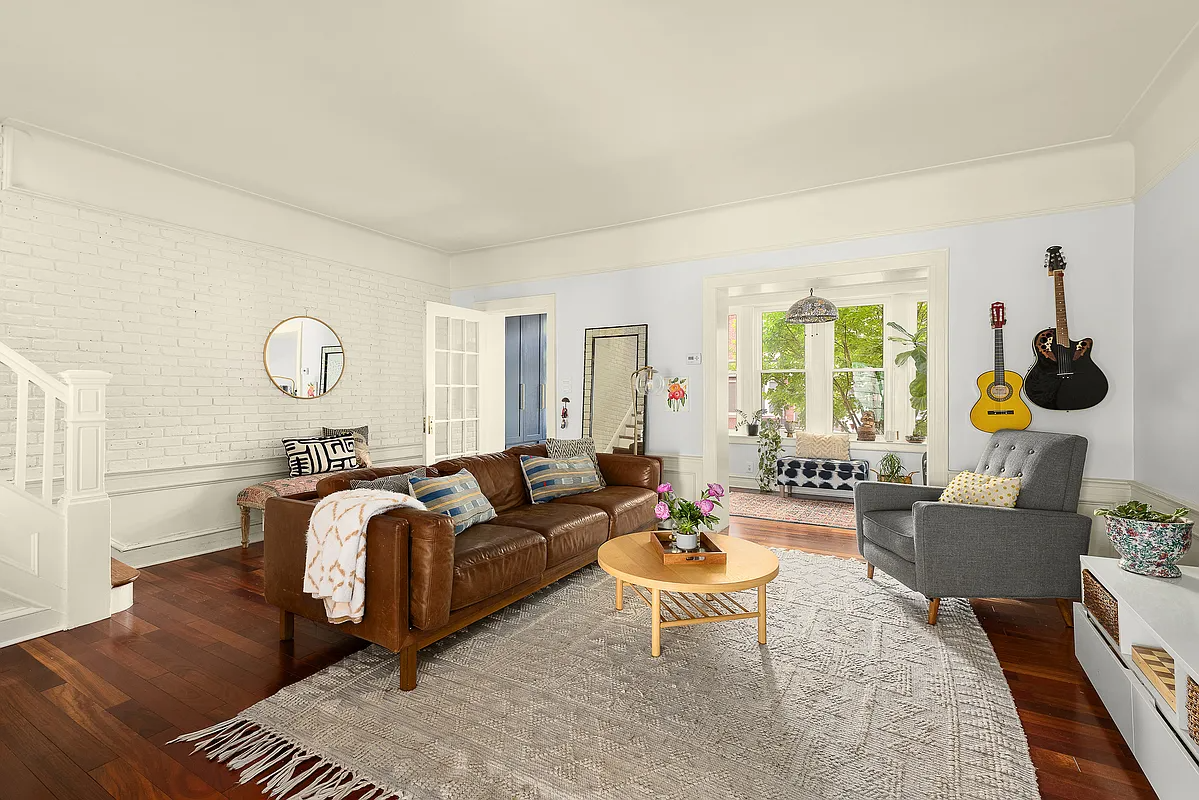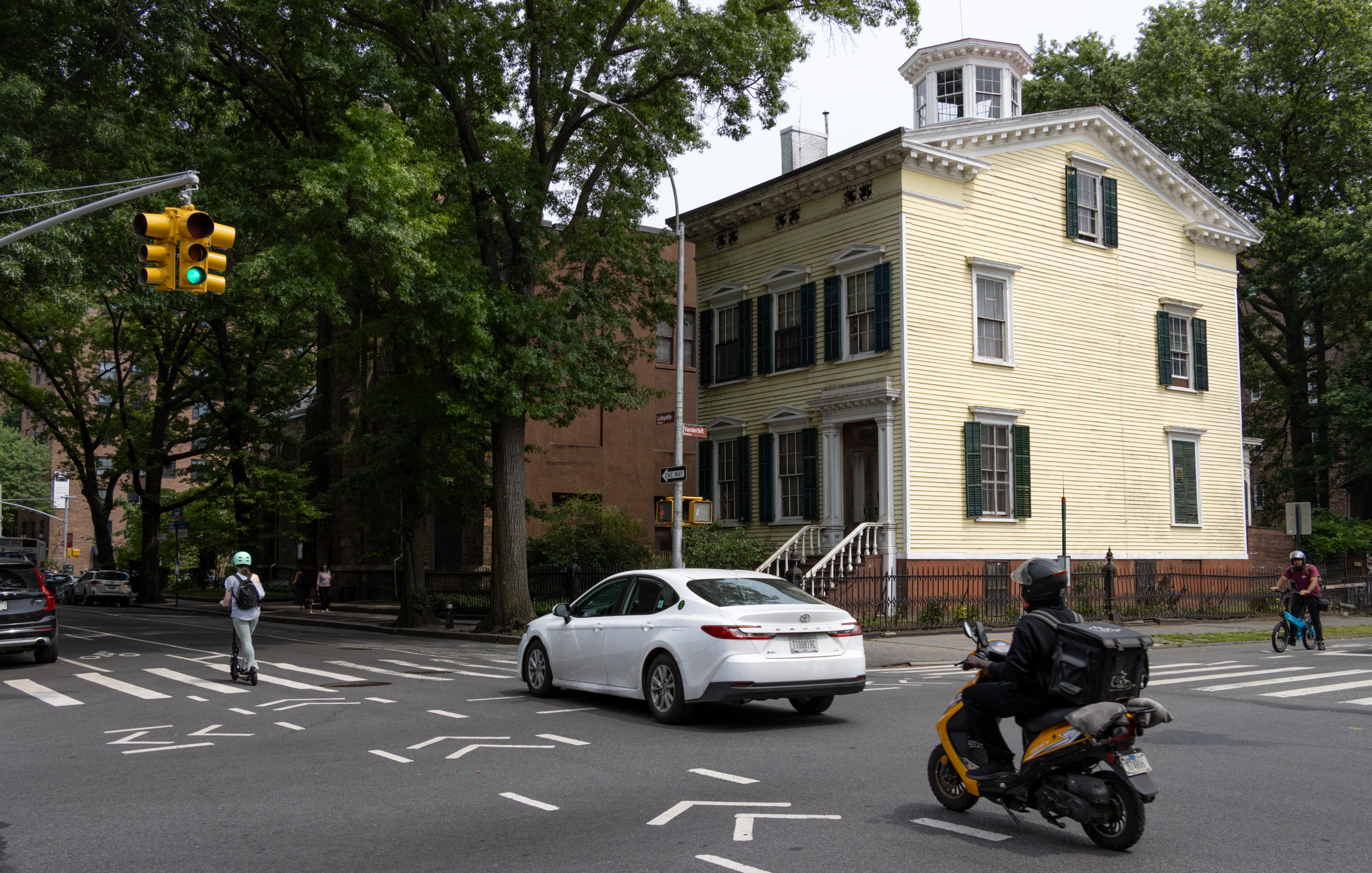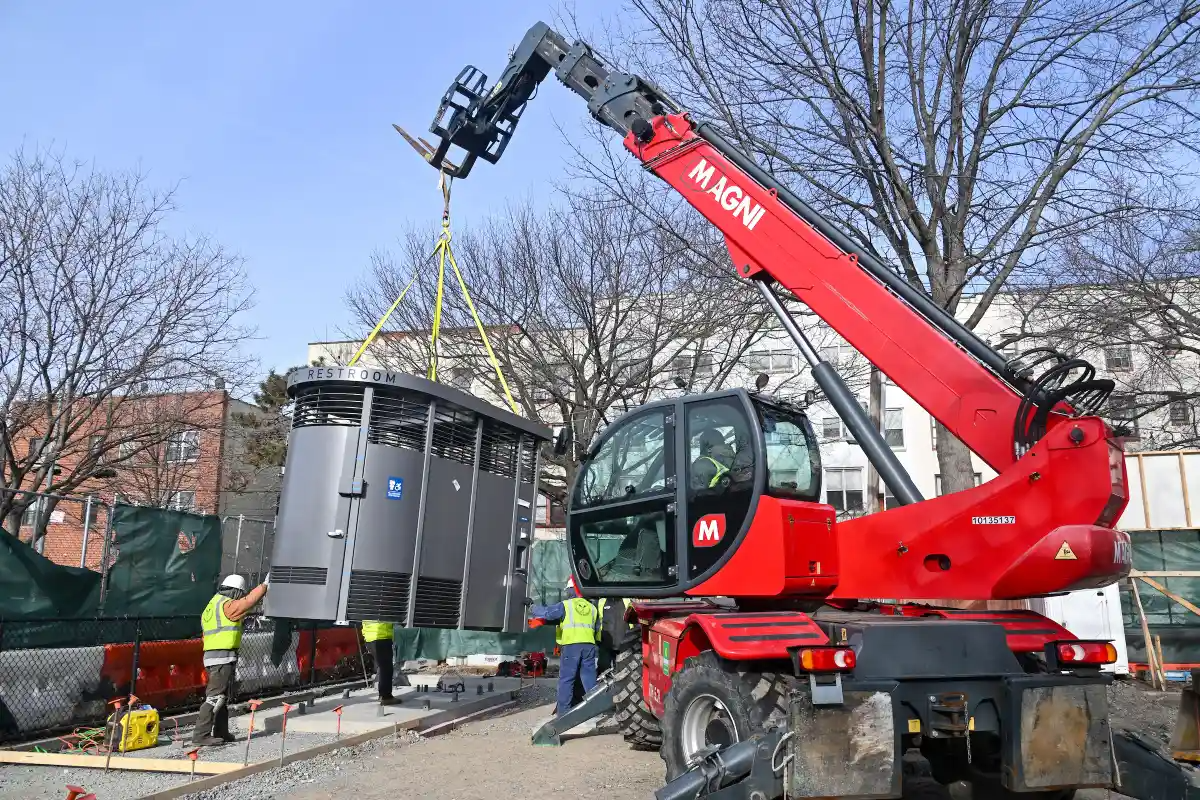Walkabout: Taking the Waters, Part 3
Read Part 1 and Part 2 of this story. During the lean years of the Great Depression, New York City Parks Commissioner Robert Moses set out an ambitious goal to build swimming pools to relieve the summer heat for New York’s overheated masses. Armed with funds from the Works Progress Administration, a federally funded New…

Betsy Head Pool, Brownsville. Line for boy’s entryway, 1939. Photo from Library of Congress
Read Part 1 and Part 2 of this story.
During the lean years of the Great Depression, New York City Parks Commissioner Robert Moses set out an ambitious goal to build swimming pools to relieve the summer heat for New York’s overheated masses. Armed with funds from the Works Progress Administration, a federally funded New Deal infrastructure program, Moses took on the herculean task of building a record number of pools and recreation centers, all to be ready by the summer of 1936.
In Brooklyn, four centers opened: McCarren Park, in Greenpoint, Red Hook Recreation Center in Red Hook, Sunset Park Center, Sunset Park, and the Betsy Head Center in Brownsville. All of the swimming pools in these centers were enormous, the largest being the McCarren pool, which could hold 6,800 people. They were all state of the art facilities, designed by famed architect Aymar Embury II, and landscape architect Gilmore D. Clarke.
Robert Moses himself was an avid swimmer, and had been a valuable member of his Yale University swim team. He would swim for exercise and pleasure his entire life. Perhaps that explains why pools and recreation centers were so important to him.

Not coincidentally, all of these centers were in working class or a poor neighborhood, which has to bring up the ever present specter of race and class in Depression-era New York City. We most often see photographs of happy splashing crowds of white children and adults in the pictures of the WPA pools. Sometimes we also see photos of black or Hispanic kids in a pool in Harlem or Brownsville, but we rarely see black and white kids together. Asian kids are non-existent.
Was segregation going on in the liberal North? Is this something we can blame on Robert Moses, who was certainly not known for a “we are the world” attitude, in terms of class and race?
The official position of New York City government has long been that everyone was equal, but everyone always knew that was not the case in reality. Racial and ethnic groups in this city have always been marginalized, whether by choice or design, and the politics of pools would be no different.
According to an excellent article called “Race, Place and Play – Robert Moses and the WPA Swimming Pools in New York City”, by Marta Gutman, Moses was a racial traditionalist who believed in the practicality of “separate but equal.”
Scholars have theorized that the years between World War I and II, when European immigration was way down, and immigration and migration of Caribbean and Southern American blacks was up, gave rise to New Yorkers’ fixation with matters of color over ethnicity: black and white, bad and good, poor and not-so-poor. Things were clear, and simple. But were they?
Recreation was a mess in traditional black neighborhoods, as funds were not equally allocated for playgrounds, parks, pools, or athletic fields. Central Harlem, home to New York’s largest black population, had none of these facilities at all in the 1920’s and early ‘30’s. Studies at the time showed that the high rate of illiteracy, disease and delinquency among black youth was in part due to the fact that there was no outlet for public recreation.
Although not as bad as Central Harlem, Brownsville and East Harlem also suffered from a lack of facilities. African-American community leaders began to pressure the city to build adequate and equal facilities in these communities as well. But nothing riled people up like swimming pools.

Swimming pools were expensive, and very desirable. They were also places where boys and girls mixed socially, and where children and adults, in the new revealing swimsuits of the day, were exposed to nearly naked flesh, both in and out of the pool. This brought out the worst in racist, sexist, and class biased attitudes and behavior. When told they would have to integrate their pools, many white operators protested that the water would have to be drained, and the pools scrubbed and filled with fresh water after black children swam in them.
Other protests arose over “race mixing”, and the horrors of interracial dating or sex. And it wasn’t just race, but also class. Many parents worried about the perversion of having working class youths in close proximity of teen aged girls, who were approaching womanhood. There was a fear that boys, who had traditionally swum naked, would not wear trunks, or behave appropriately. Data showed that many parents kept their daughters away from public pools. The majority of swimmers in all of the period photographs, regardless of race, are male.
There was also the danger of disease. Before Robert Moses’ WPA pools, most city pools were not cleaned regularly, and poor children who played in dirty streets and swam in the filthy waters of New York City’s rivers and bays, also jumped eagerly into city pools, spreading polio and typhoid, in those days before vaccinations.
By the time Moses took over a unified parks system in 1934, it was time for widespread change. In a massive building campaign, he built eleven state of the art pools in two years. Some were in predominantly white neighborhoods, some in black. They were essentially separate, but certainly equal.
In East Harlem, the Jefferson Park pool was almost exclusively white Italian. Black swimmers did not go there, and Puerto Ricans, who were beginning to edge Italians out of East Harlem, were also not welcome. When the Central Harlem Colonial Pool was opened, also in 1936, it became the “black pool”, and the place where the Puerto Rican kids were more welcomed.
Robert Moses did not feel it was his place to integrate either place, and because the facilities were equal, he was happy and had done his job. He said, in a speech at Harvard, in 1939, “Immediately on the opening of the new pool it became evident the local Italian population would not tolerate the so-called Spanish element in the pool.

Obviously this was against the spirit and the letter of the State Constitution and the Civil Rights Law, yet what could be done about it?…Shortly after this pool opened another one in the Negro section was completed. The Porto Ricans [sic] finally decided to go there. The Harlem Negroes were resentful of any white intrusion. Our problem was ended in a practical way and the theory of the Bill of Rights remained intact.”
Then there is the famous story, recounted in Robert Caro’s book, The Power Broker, that tells of Moses ordering the water in the Jefferson Park pool to be unheated, because “black people don’t like cold water”, thus ensuring that the pool remained segregated. The author of this paper disputes the story.
Is it true? We’ll probably never know. Cold water would not keep most people out of a pool on a hot day; however the threat of getting beat up would certainly do it. The “Power Broker”, for good or ill, only had so much power.
The integration of community pools would have its moment in the Brownsville pool at Betsy Head Park. In that neighborhood, the traditional Jewish neighborhood was quickly making way for a large population of black people. There was already a recreation center here, with a pool, but it had not been kept up, and was in Moses’ words, “disgraceful.”
The Parks Department began a series of improvements, and when the pool re-opened in the summer of 1936, no one from the mayor’s office or the Parks Department even bothered to show up. The snub was shrugged off, but the slight was unheard of. Moses promised to do some more fixing up, but a mysterious fire gutted the entire site in 1937, causing the entire project to be rebuilt.
Moses wanted to use the new funds allocated to NYCHA to rebuild the park, arguing that recreation centers helped to build communities. He didn’t get control of NYCHA funds, but the new Betsy Head pool and recreation center opened in 1939.
Unwritten rules encouraged self-imposed segregation at this pool, with Jewish and black residents using it at separate times. A film of the opening day shows only whites using the pool, and these were run in the Architectural Record and in newspapers. But photographs taken that day and subsequently, never published, show a different story. In these photographs, blacks and whites, boys and girls, using the pool together.
The photographs, by Samuel Gottscho, show young women and their immigrant mothers and grandmothers outside of the pool enclosure, the girls in their fashionable bathing suits, and the older women in more conservative dress. He shows an immigrant community becoming “American”.
He also shows black and white children sharing locker rooms, the pool deck and the water. As time passed, boundaries lowered. Team sports for boys, organized at the centers were integrated without incident, and African-American lifeguards were employed at Brownsville, and also at McCarren Park, as well as in Harlem. This was New York, in the 1930’s and 1940’s. Maybe not great progress and equality, but certainly a start.
This was in sharp contrast to an incident in St. Louis, where the integration of a city pool in 1941, led to a riot, with white rioters chasing blacks through the streets, clubbing them with bats and lead pipes. 400 policemen were not able to stop the riot, and the mayor of the city re-instated segregation in the city’s public pools, a policy that wasn’t overturned for another twenty years.
We never got that bad here, thank goodness. Long story long, the story of race, segregation and neighborhoods in New York City is a long tale, fraught with moments of great stupidity on all sides, as well as moments of great courage. Robert Moses may not have helped the cause of integration, but he didn’t invent segregation or discrimination, either. He did build some damn fine pools. Love him or hate him, you have to give him that.
Related Stories
Swimming Pool Construction in Carroll Gardens Alarms Neighbors
Long-Empty Crown Heights Armory to Gain Townhouses, Swimming Pool, Affordable Units
Bed Stuy Brownstone With Pool, Movie Theater Asks $1.995 Million





Neat story, the racial aspect as well as everything else. (I keep my daughter away from public pools, too.)
This is such a fascinating subject isn’t it? A huge city with a diverse population but with everyone staying within their own group and being suspicious and resentful of other groups.
In terms of northern segregation, when I moved to New York in 1980, the city was as carefully and thoroughly segregated as any city on the planet. You would think it was against the law for a white person to live north of 96th Street or for a black person to live west of Court Street.
We should not put this scenario entirely in past tense either. The restoration of McCarren pool and park was very contentious with Latin versus Satmar needs and wants (Latins like to party on Friday nights, Satmars not so much) It’s not easy being a melting pot.